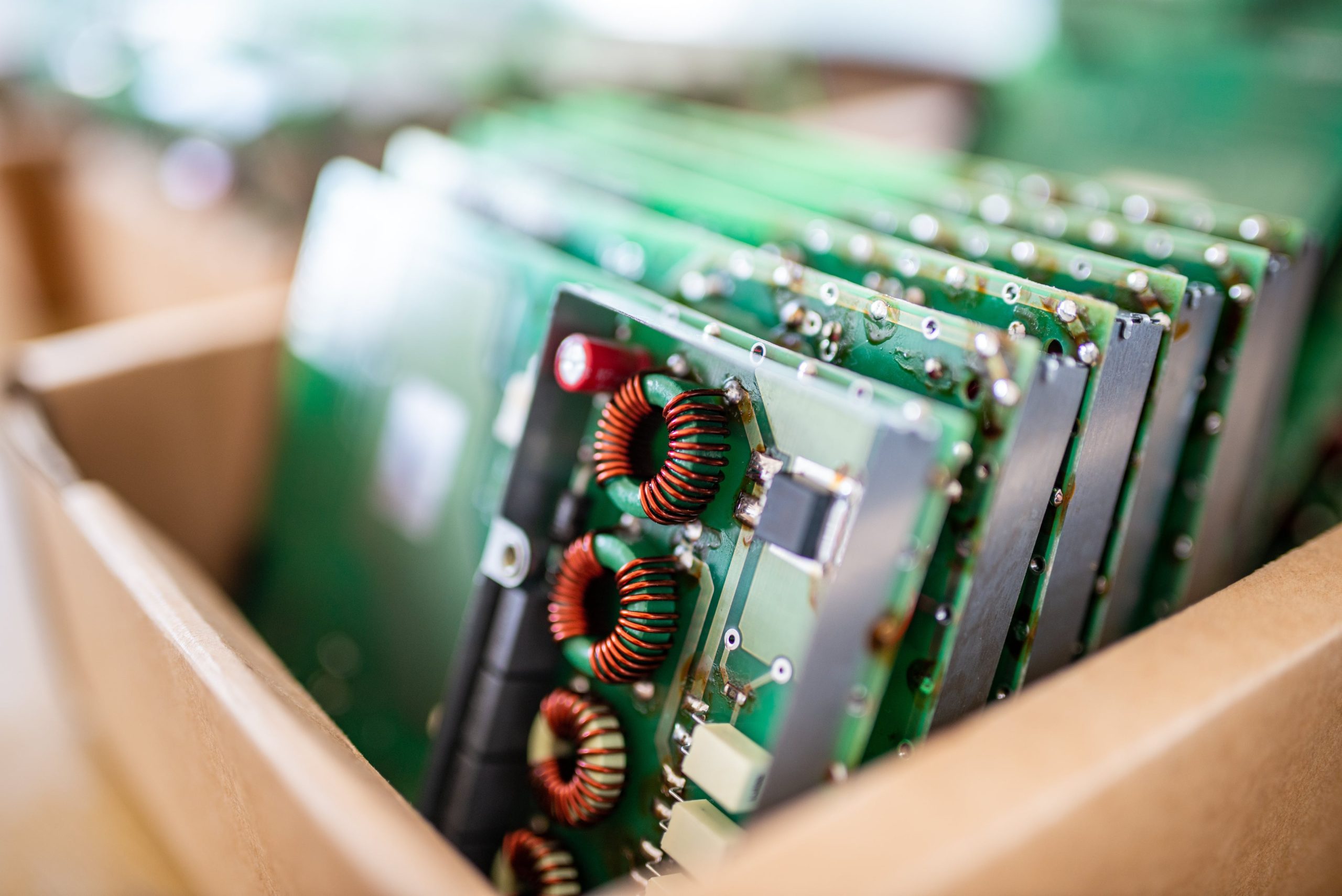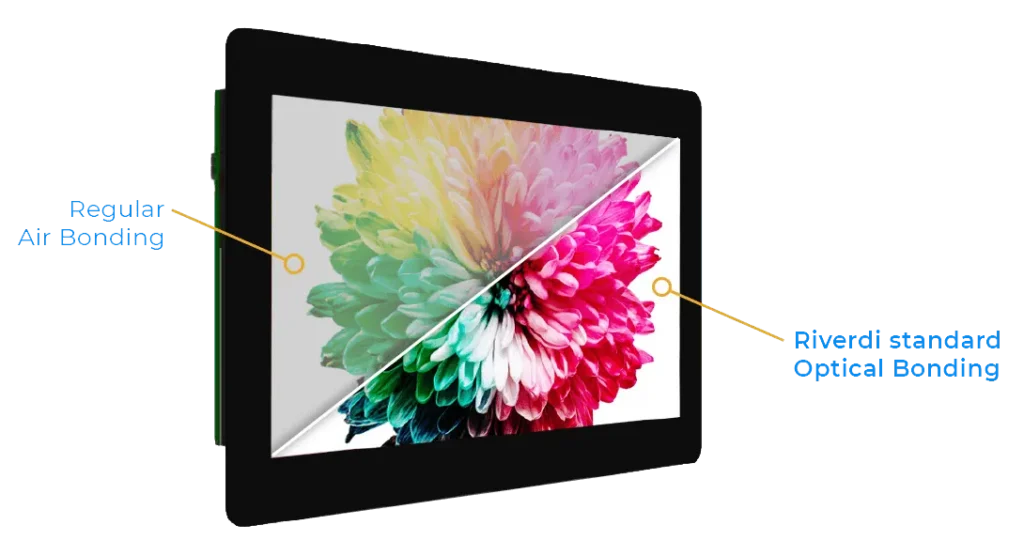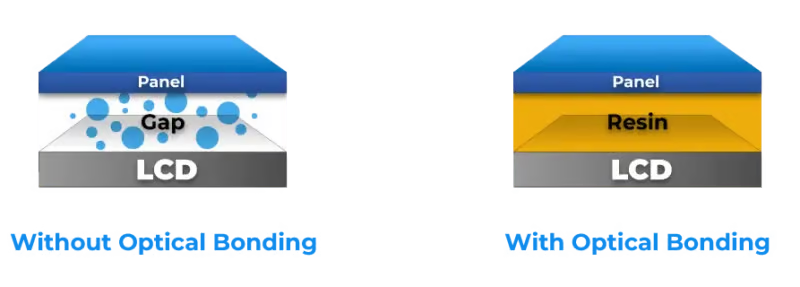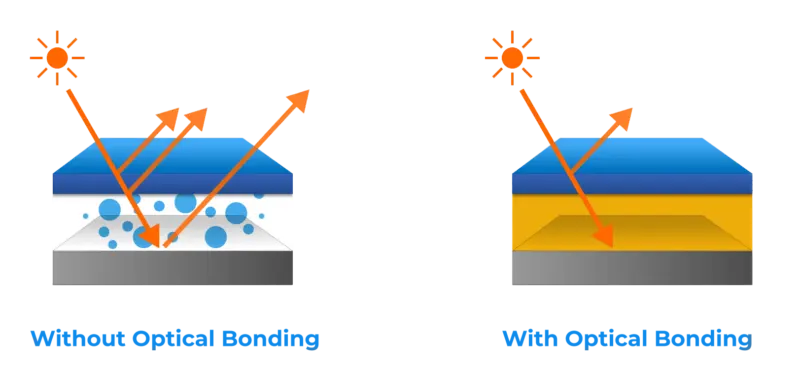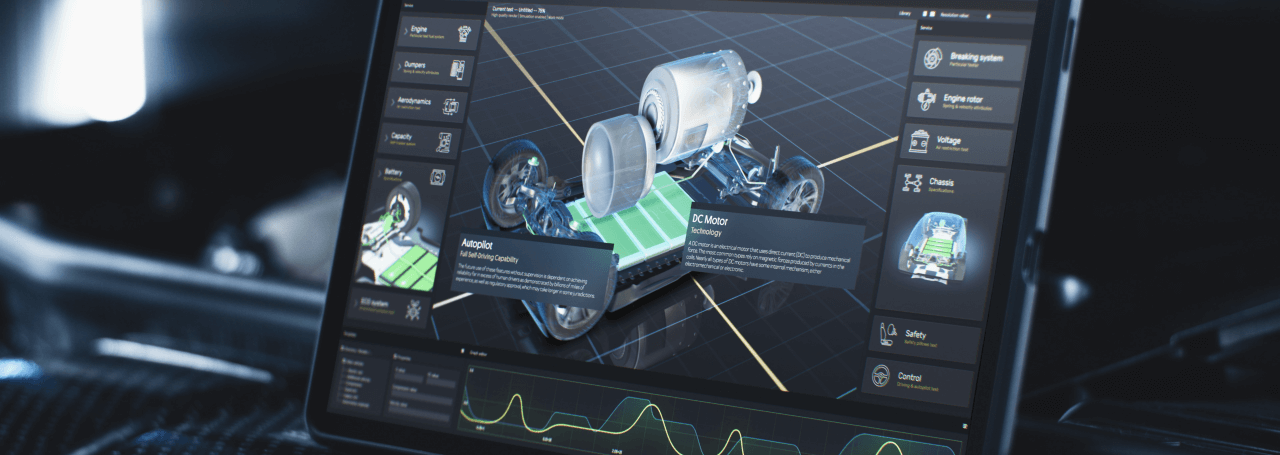Optical bonding is a process of affixing the touch panel (or only the protective glass) to the display using a liquid, gel, or dry (film) adhesive. In general, this process improves parameters of the optically bonded LCD module – both the optical performance and its durability.
The LCD optical bonding process uses an optical-grade adhesive to glue glass to the top surface of a display. It eliminates the usual air-gap between the touch panel and the display.
The air gap is the reason for the phenomena of sunlight reflection. So, when the display is off, the Visual Area (V.A) is never black – it is gray.
By removing the air gap, we reduce the number of internal reflecting surfaces. This improves readability by reducing the reflection and improving contrast. This is how LCD optical bonding increases the optical performance of the display.
The optical bonding of LCD consists of three main stages:
- Preparation stage – first we need to select appropriate optical clear adhesive and take care of surface decontamination.
- Glue dispensing – here we apply the optically clear adhesive on the whole display surface.
- Bonding and curing – touch panel is carefully layered onto the LCD, avoiding any gaps or bubbles. Then the adhesive hardens with UV light.
Liquid Adhesive
There are many parameters that the liquid adhesive needs to fulfill to ensure a valid process. Firstly, the liquid adhesive used for optical bonding must be transparent. It needs to have a suitable refractive index. To provide top-quality optical bonding of LCD, the adhesive needs to be made under careful control of the producer, making sure that there are no significant variations in optical properties.
Secondly, the adhesive has to bond with adequate strength. It needs to have a reasonable pot life and cure to the proper finished bond condition using temperatures and conditions that are friendly to optical bonding facilities.
In Riverdi optically bonded LCD’s we use an optical clear adhesive that meets strict requirements. Depending on the application, we adjust the best adhesive for your project. We design optical bonding to avoid undesirable effects, such as:
- Yellowing – when the mixture is not adjusted properly, the glue may react with UV, chemicals or radiation and turn yellow.
- Mura effect – glue tensioning is causing mechanical stress.
- Delamination of the module – shrinkage of the adhesive at high temperatures.
We need to remember that good optical performance is not only a matter of aesthetics. Such treatment ensures the module is rugged. Optically bonded LCD is shock, impact, and vibration resistant.
Good readability is the crucial parameter for safety issues. For example, displays mounted in vehicles or operating in hot-wet and cold-dry environments.
LCD optical bonding technology is getting more popular on the market. It becomes more cost-effective and the production time shortens. Prices vary based on parameters like the size of the module, optical glass surface treatment, volume, and lead time. For optimal parameters, the price can fluctuate around a dozen USD.
Contact us if you would like a display with Optical Bonding.
DISCOVER OUR
Whitepaper
Achieve the perfect user-display interaction with the right Touch Sensor IC. Ever faced issues with phantom touch events or certification? Boost your R&D like a pro with our Whitepaper!
